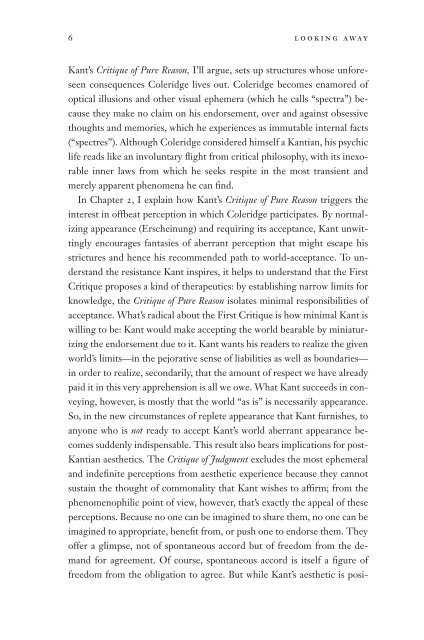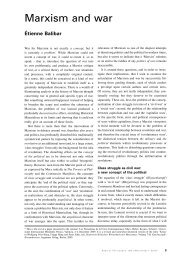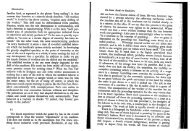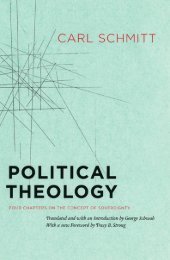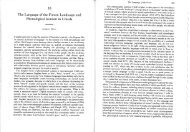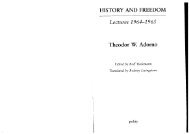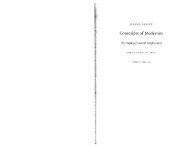Terada - Looking Away (Selections).pdf - Townsend Humanities Lab
Terada - Looking Away (Selections).pdf - Townsend Humanities Lab
Terada - Looking Away (Selections).pdf - Townsend Humanities Lab
You also want an ePaper? Increase the reach of your titles
YUMPU automatically turns print PDFs into web optimized ePapers that Google loves.
6 looking away<br />
Kant’s Critique of Pure Reason, I’ll argue, sets up structures whose unfore-<br />
seen consequences Coleridge lives out. Coleridge becomes enamored of<br />
optical illusions and other visual ephemera (which he calls “spectra”) because<br />
they make no claim on his endorsement, over and against obsessive<br />
thoughts and memories, which he experiences as immutable internal facts<br />
(“spectres”). Although Coleridge considered himself a Kantian, his psychic<br />
life reads like an involuntary flight from critical philosophy, with its inexorable<br />
inner laws from which he seeks respite in the most transient and<br />
merely apparent phenomena he can find.<br />
In Chapter 2, I explain how Kant’s Critique of Pure Reason triggers the<br />
interest in offbeat perception in which Coleridge participates. By normalizing<br />
appearance (Erscheinung) and requiring its acceptance, Kant unwittingly<br />
encourages fantasies of aberrant perception that might escape his<br />
strictures and hence his recommended path to world-acceptance. To understand<br />
the resistance Kant inspires, it helps to understand that the First<br />
Critique proposes a kind of therapeutics: by establishing narrow limits for<br />
knowledge, the Critique of Pure Reason isolates minimal responsibilities of<br />
acceptance. What’s radical about the First Critique is how minimal Kant is<br />
willing to be: Kant would make accepting the world bearable by miniaturizing<br />
the endorsement due to it. Kant wants his readers to realize the given<br />
world’s limits—in the pejorative sense of liabilities as well as boundaries—<br />
in order to realize, secondarily, that the amount of respect we have already<br />
paid it in this very apprehension is all we owe. What Kant succeeds in conveying,<br />
however, is mostly that the world “as is” is necessarily appearance.<br />
So, in the new circumstances of replete appearance that Kant furnishes, to<br />
anyone who is not ready to accept Kant’s world aberrant appearance becomes<br />
suddenly indispensable. This result also bears implications for post-<br />
Kantian aesthetics. The Critique of Judgment excludes the most ephemeral<br />
and indefinite perceptions from aesthetic experience because they cannot<br />
sustain the thought of commonality that Kant wishes to affirm; from the<br />
phenomenophilic point of view, however, that’s exactly the appeal of these<br />
perceptions. Because no one can be imagined to share them, no one can be<br />
imagined to appropriate, benefit from, or push one to endorse them. They<br />
offer a glimpse, not of spontaneous accord but of freedom from the demand<br />
for agreement. Of course, spontaneous accord is itself a figure of<br />
freedom from the obligation to agree. But while Kant’s aesthetic is posi-


